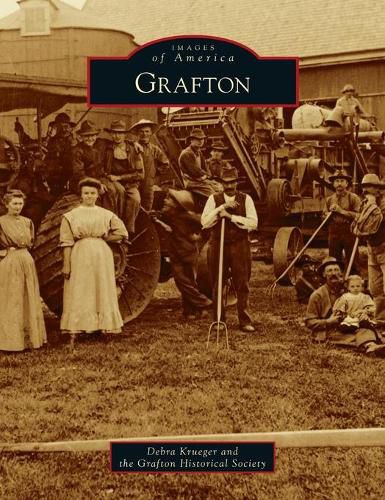Readings Newsletter
Become a Readings Member to make your shopping experience even easier.
Sign in or sign up for free!
You’re not far away from qualifying for FREE standard shipping within Australia
You’ve qualified for FREE standard shipping within Australia
The cart is loading…






This title is printed to order. This book may have been self-published. If so, we cannot guarantee the quality of the content. In the main most books will have gone through the editing process however some may not. We therefore suggest that you be aware of this before ordering this book. If in doubt check either the author or publisher’s details as we are unable to accept any returns unless they are faulty. Please contact us if you have any questions.
In 1838, Timothy Wooden purchased land on the banks of the Milwaukee River and began the settlement that would become Grafton, Wisconsin. Grafton soon became an agricultural and industrial community as the rich yellow earth attracted settlers from Germany, Ireland, and England to raise wheat, grazing grasses, and garden crops. Those early settlers discovered vast limestone deposits throughout the region, and by 1890, there were nine kilns operated by the Milwaukee Falls Lime Company. Industries were also created along the banks of the river, and in 1902, William Roebken opened the Badger Worsted Mills, the only worsted wool mill west of Philadelphia. By the early 20th century, Grafton became a music industry center when New York Recording Studios moved into the previous Wisconsin Chair Factory building on the Milwaukee River. Blues greats from all over the country made the trip to Grafton to record their music. Today’s Grafton carries on the traditions of its founders by preserving historic buildings and creating new residential and recreational spaces for its residents. With a revitalized downtown, Grafton has become a commercial center for Ozaukee County.
$9.00 standard shipping within Australia
FREE standard shipping within Australia for orders over $100.00
Express & International shipping calculated at checkout
This title is printed to order. This book may have been self-published. If so, we cannot guarantee the quality of the content. In the main most books will have gone through the editing process however some may not. We therefore suggest that you be aware of this before ordering this book. If in doubt check either the author or publisher’s details as we are unable to accept any returns unless they are faulty. Please contact us if you have any questions.
In 1838, Timothy Wooden purchased land on the banks of the Milwaukee River and began the settlement that would become Grafton, Wisconsin. Grafton soon became an agricultural and industrial community as the rich yellow earth attracted settlers from Germany, Ireland, and England to raise wheat, grazing grasses, and garden crops. Those early settlers discovered vast limestone deposits throughout the region, and by 1890, there were nine kilns operated by the Milwaukee Falls Lime Company. Industries were also created along the banks of the river, and in 1902, William Roebken opened the Badger Worsted Mills, the only worsted wool mill west of Philadelphia. By the early 20th century, Grafton became a music industry center when New York Recording Studios moved into the previous Wisconsin Chair Factory building on the Milwaukee River. Blues greats from all over the country made the trip to Grafton to record their music. Today’s Grafton carries on the traditions of its founders by preserving historic buildings and creating new residential and recreational spaces for its residents. With a revitalized downtown, Grafton has become a commercial center for Ozaukee County.